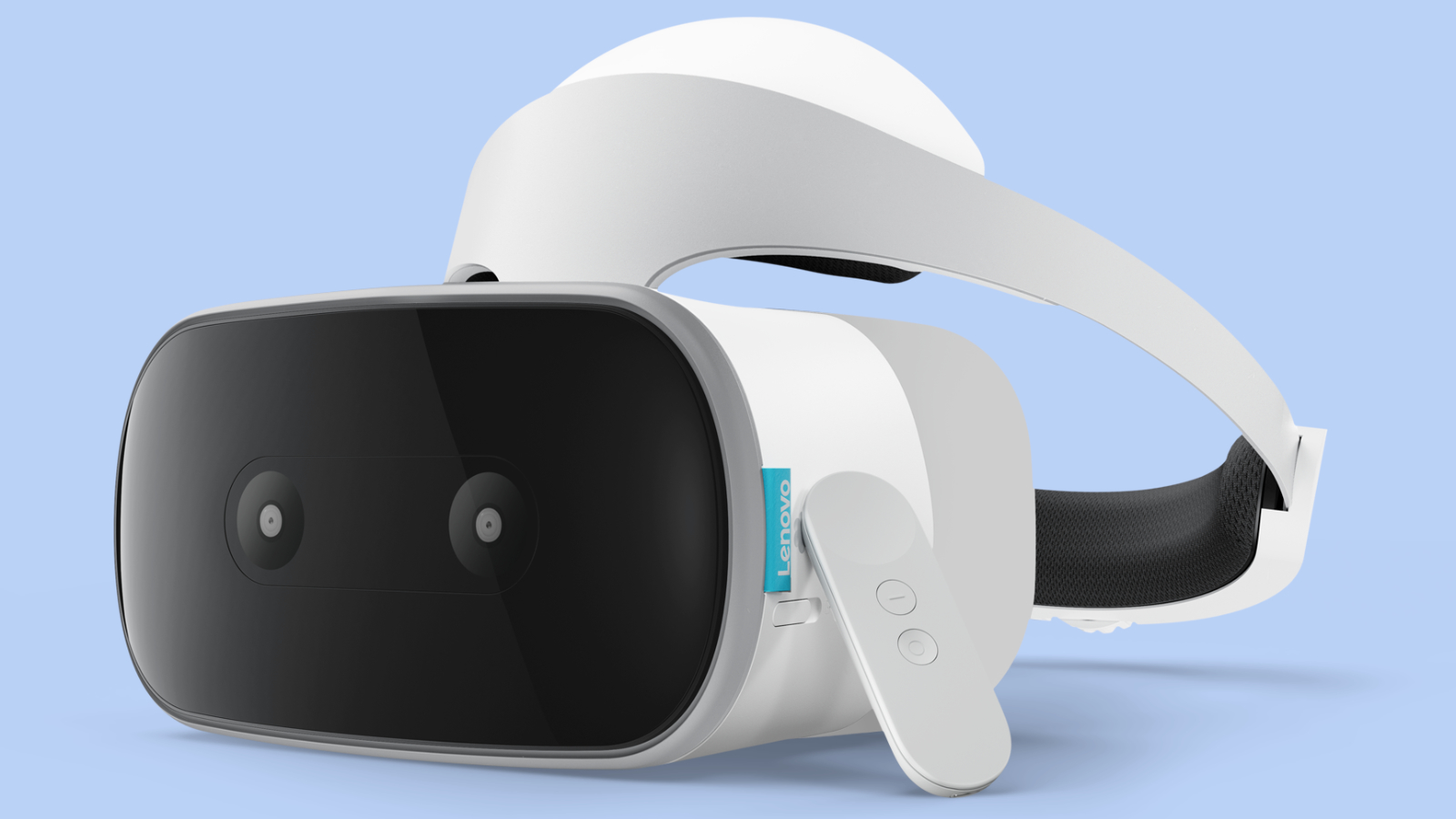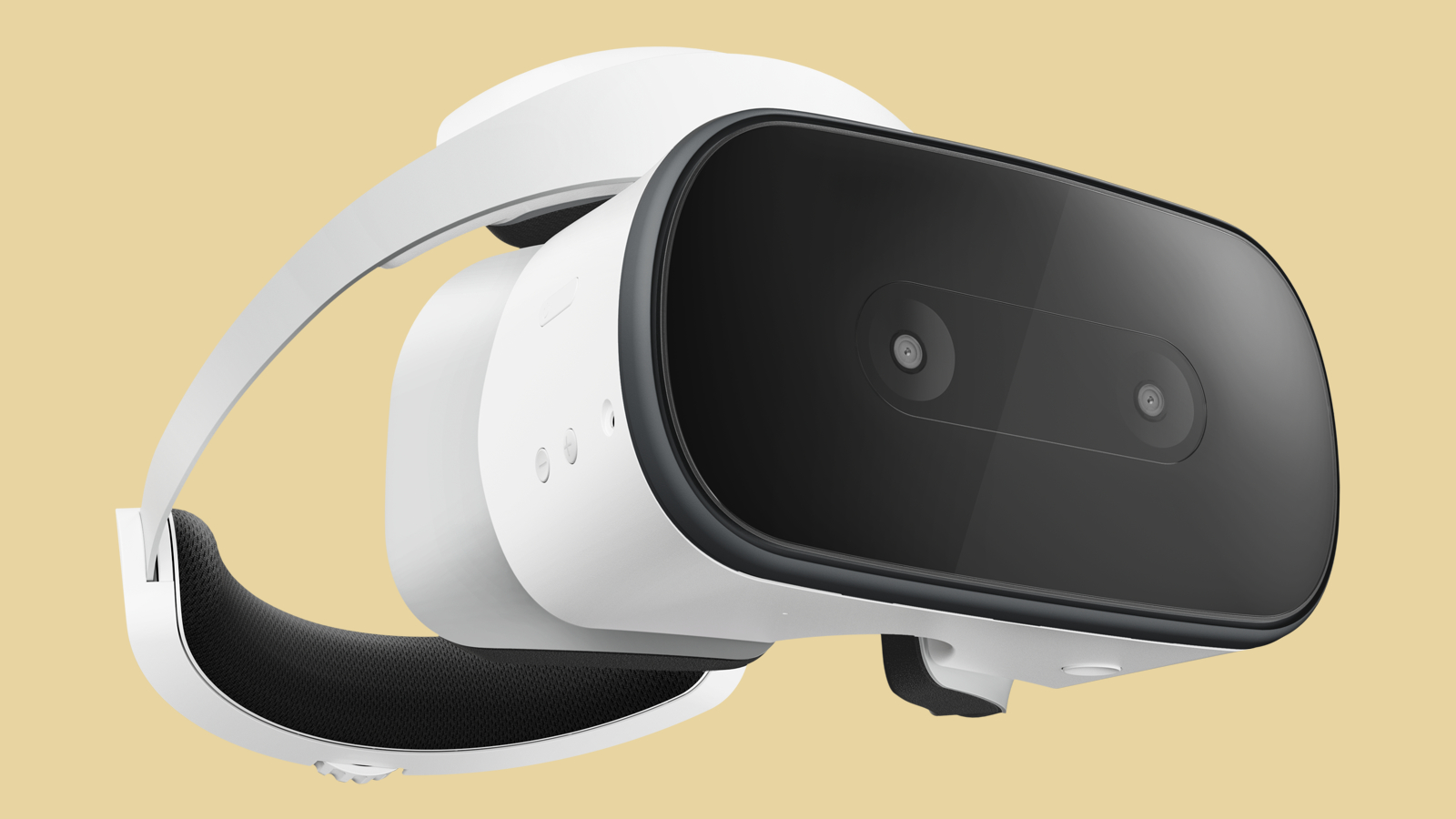The Lenovo Mirage Solo takes Google Daydream to the next level
Wire-free, phone-free mobile VR is coming soon

Lenovo has finally announced its standalone Google Daydream headset, the Mirage Solo, at CES 2018. First teased at Google IO 2017, Lenovo’s headset is the first wire-free, phone-free model for Google’s virtual reality platform to hit store shelves.
Unlike the $79 Google Daydream View, you won’t need a phone to get started with the Mirage Solo – just the headset itself can power the entire experience with software that Google is now calling Daydream OS. It’s loaded with a powerful Snapdragon 835 processor, 4GB of RAM and 64GB of internal storage with support for microSD.
When you strap the Mirage Solo on your face, you’ll be looking at a vibrant 5.5-inch 2,560 x 1,440 LCD display. In that way, it’s similar to what a phone can put out, but the 110-degree field of view could make a big difference in immersion.

Until we try it out ourselves, the headset’s weight of 1.42 pounds has us a bit worried about comfort. That’s about a half pound heavier than the HTC Vive, but since Lenovo’s has all of the goodies built-in, its lofty weight seems forgivable. Plus, it looks a lot like the PlayStation VR in that it seems to put its weight on the user’s forehead – a design decision that will make it very comfy, but not so kind to your hair style.
A World(Sense) of possibilities
Putting aside its impressive internal specs, what really sets this apart from other mobile VR headsets is its WorldSense function, enabled by its inside-out sensors (as opposed to outside-in) and cameras that grant it “PC-like positional tracking”, according to Google VR and AR president, Clay Bavor.
Sure, you’ll still be able to play the best Google Daydream games that are already out, thanks to the inclusion of the standard Daydream controller, but Lenovo’s new headset will bring along new experiences that let you step into the game, as well as duck, dodge and walk around within it.
At Google IO 2017, there were some awesome tech demos that got us excited for WorldSense. Google’s Project Seurat claims to make graphics in mobile VR a whole lot better, by loading textures in layers that shift depending on your perspective. You can see this working in theory in the clip below, but it has apparently put the tech to work in an impressive Star Wars demo that you can see here.
Get daily insight, inspiration and deals in your inbox
Sign up for breaking news, reviews, opinion, top tech deals, and more.
As far as what you’ll be playing that’s unique to this new way of experiencing Daydream, Google announced that a new game based on the Blade Runner universe, called Blade Runner: Revelations, will be coming. Aside from that, details on titles that will support the Mirage Solo’s WorldSense capabilities at launch are nil.
The Mirage Solo will start "under $400" in Lenovo's words, which is indeed more affordable than the Google Daydream View and a flagship phone with equivalent specs cost. It’s not the low price that some were probably hoping for, especially since the admittedly less capable Oculus Go is coming for just $199. Look for it to arrive in the second quarter of 2018.
- New year, new tech – check out all our coverage of CES 2018 straight from Las Vegas, the greatest gadget show on Earth
Cameron is a writer at The Verge, focused on reviews, deals coverage, and news. He wrote for magazines and websites such as The Verge, TechRadar, Practical Photoshop, Polygon, Eater and Al Bawaba.
